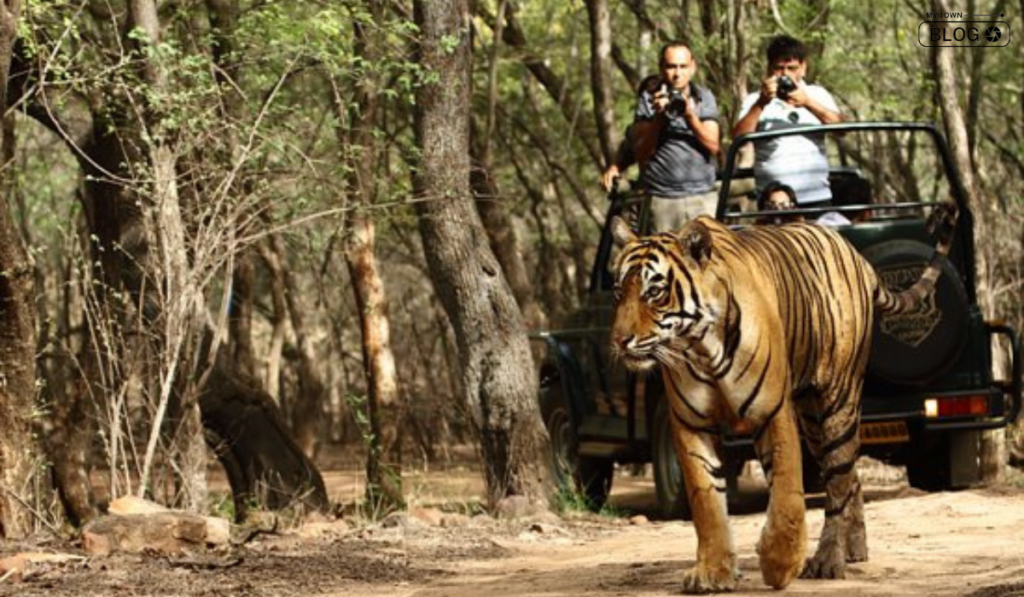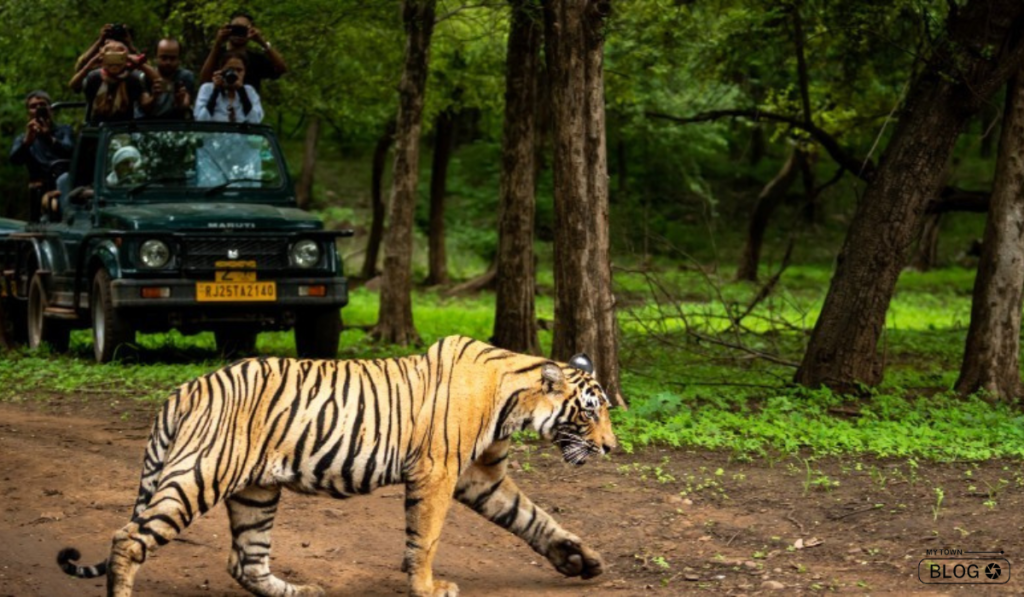If you have a passion for wildlife, seize the opportunity to explore the top wildlife sanctuaries in India during the winter season. This is the prime time for wildlife enthusiasts, as the cooler temperatures unveil a spectacle of exotic animals emerging from their secluded habitats. Additionally, the winter months welcome migratory birds, enhancing the overall experience from October to March.
Jim Corbett National Park, Uttarakhand
Renowned for its Bengal tigers, Jim Corbett National Park is one of India’s premier wildlife sanctuaries. Home to 300 wild elephants and 200 tigers, the park also boasts a diverse range of animals, including various deer species, otters, langurs, sloth bears, and an impressive 586 species of migratory birds.
Ranthambore National Park, Sawai Madhopur, Rajasthan

A sanctuary that seamlessly blends nature, wildlife, and history, Ranthambore National Park is among the largest in India. Famous for its tiger population, the park is also a habitat for leopards, sloth bears, gray langurs, and an array of other wildlife. The historic Ranthambore Fort, cenotaph ruins, and a rich variety of plant species add to its allure.
Bandhavgarh National Park, Madhya Pradesh
Known for its high density of Bengal tigers, Bandhavgarh National Park is a treasure trove of biodiversity. Home to 40 species of mammals, over 250 bird species, and numerous reptiles, the park’s wildlife includes langurs, deer, wild boar, Indian bison, and the captivating Bandhavgarh fort with its connection to the Ramayana.
Keoladeo National Park, Bharatpur, Rajasthan
Formerly Bharatpur Bird Sanctuary, this UNESCO World Heritage Site is a haven for bird enthusiasts. Hosting more than 364 bird species, including the rare Siberian Crane, the park also features diverse flora, 50 fish species, 379 types of flowers, and a variety of reptiles, creating an ideal environment for ornithologists and photographers.
Kaziranga National Park, Assam
Home to 2/3 of the world’s one-horned rhinoceros population, Kaziranga National Park is a UNESCO World Heritage Site. With elephants, leopards, water buffaloes, swamp deer, and tigers, the park offers a stunning natural landscape. Founded in 1905, it became a Tiger Reserve in 2006, making it a must-visit destination in northeast India.
Sundarbans National Park, West Bengal
A UNESCO World Heritage Site, Sundarbans National Park is renowned for its Royal Bengal tigers and spotted deer. The largest delta with mangrove forests in the world, the park also boasts diverse flora, avifauna, reptiles, and marine life. Best visited from October to December, it offers a unique experience in a swamp forest setting.
Gir National Park, Gujarat
As the only place where endangered Asiatic lions are found, Gir National Park is a top destination for wildlife enthusiasts. With 300 avifauna species, 38 mammal species, 37 reptile species, and over 2000 insect species, the park is a rich biodiversity hotspot. The park’s proximity to popular destinations like Somnath and Junagadh adds to its appeal.
Kanha National Park, Madhya Pradesh
The largest and best-administered national park in Madhya Pradesh, Kanha National Park is an ideal destination for spotting Royal Bengal Tigers. As part of Project Tiger, the park is home to over 1000 species of flowering plants and a diverse range of wildlife, including migratory birds, jackals, sloth bears, and leopards.
Pench National Park, Madhya Pradesh

Home to elusive leopards and a variety of bird species, Pench National Park is a captivating destination that inspired Rudyard Kipling’s Jungle Book. With over 285 resident and migratory birds, including four endangered vulture species, the park, divided by the River Pench, is a must-visit for wildlife enthusiasts seeking a unique experience.
Conclusion
Embarking on a journey to explore the wonders of “Wildlife Sanctuaries in India” during the winter months promises an unparalleled experience for nature lovers and wildlife enthusiasts. From the majestic Bengal tigers of Jim Corbett to the elusive leopards of Pench, each sanctuary reveals a unique tapestry of biodiversity. The winter season, with its cooler temperatures and migratory birds, enhances the allure of these sanctuaries, creating a perfect opportunity to witness the wonders of the natural world. Whether you are captivated by the rich history of Ranthambore or the diverse avifauna of Bharatpur, India’s wildlife sanctuaries in winter are a testament to the country’s commitment to conservation and ecological diversity.
FAQs
When is the best time to visit these wildlife sanctuaries in India?
The winter season, from October to March, is the optimal time to visit these sanctuaries. The cooler temperatures make wildlife sightings more likely, and migratory birds add to the overall experience.
Are these sanctuaries suitable for families and children?
Yes, many of these wildlife sanctuaries are family-friendly. However, it’s essential to check specific park regulations and age restrictions for activities like safaris. Some parks offer educational programs for children.
What safety measures should visitors take during their wildlife safari?
Visitors should adhere to park guidelines, maintain a safe distance from wildlife, and follow the instructions of trained guides. It’s crucial to respect the natural habitat and not disturb the animals.
Are these sanctuaries accessible for international tourists?
Yes, these wildlife sanctuaries are open to international tourists. Visitors should check visa requirements, travel advisories, and specific entry guidelines for each sanctuary.
Are accommodations available near these sanctuaries?
Most wildlife sanctuaries offer accommodations ranging from budget to luxury options. It’s advisable to book accommodations in advance, especially during peak seasons.
Can visitors engage in activities other than wildlife safaris?
Yes, many sanctuaries offer additional activities such as bird watching, nature walks, and visits to historical sites within the park. Visitors can explore the diverse aspects of each sanctuary beyond wildlife safaris.
How can I contribute to wildlife conservation during my visit?
Visitors can contribute by respecting park rules, avoiding littering, and supporting local conservation initiatives. Some sanctuaries also have volunteer programs for those interested in actively participating in conservation efforts.








